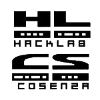Wireless Commons Manifesto
Abbiamo creato il Wireless Commons Manifesto perché una rete senza fili globale è alla nostra portata. Lavoreremo per definire e ottenere un bene comune wireless (wireless commons) costruito utilizzando lo spettro libero, ed in grado di connettere persone ovunque. Crediamo che una rete indipendente, globale e aperta al pubblico abbia un grande valore. Abbatteremo le barriere commerciali, tecniche, sociali e politiche per il bene comune. Il wireless commons è uno degli ultimi passi verso la comunicazione universale senza l'interferenza di intermediari.
L'umanità è ora all'inizio di un punto di svolta perché Internet ha trasformato il modo in cui gli esseri umani si relazionano l'uno all'altro. Tutta la comunicazione può essere ricondotta ad una relazione umana, che siano messaggi di testo scambiati tra amanti, o ragazzi che scambiano musica. Internet ci ha dato l'abilità di comunicare più velocemente e a basso costo come mai nella storia.
Il valore di Internet aumenta esponenzialmente con il numero di persone che sono in grado di partecipare. Nel mondo di oggi la comunicazione può avvenire senza l'utilizzo di reti di comunicazione antiquate. Le organizzazioni che controllano queste reti sono anacronismi zoppicanti, limitati da spese e necessità fisiche dell'utilizzo di cavi per la costruzione delle loro reti. Per questo non possono servire alla grande massa di persone che aspettano di beneficiare di un bene comune wireless. I loro interessi divergono dai nostri e i loro controlli sulla rete strangolano la nostra abilità di comunicare.
Dispositivi di rete a basso costo che possono operare in bande libere dello spettro hanno iniziato un'altra rivoluzione. All'improvviso chiunque ha il potere di creare una rete indipendente da ogni limite fisico eccetto la distanza. Le onde possono attraversare barriere, confini di proprietà e comunità. Molte comunità sono state formate in tutto il mondo per aiutare ad organizzare queste reti. Stanno formando la base per la rimozione delle reti di comunicazione tradizionali come intermediarie della comunicazione umana.
La sfida che le wireless community networks devono affrontare è il fattore limitante della comunicazione senza fili: la distanza. Le relazioni che si possono formare in una wireless community network sono limitate dalla loro reciproca raggiungibilità fisica. Tipicamente queste reti stanno crescendo fino alle dimensioni di città, e la grandezza oltre quel punto richiede coordinamento ed una visione strategica per le community network nella loro interezza. Senza questo coordinamento è difficile vedere come la comunità mondiale delle community network può interconnettere i propri sistemi e creare una vera alternativa alle reti di telecomunicazioni esistenti.
Ci sono molte barriere alla creazione di una rete globale. Fin ora l'attenzione è stata posta sull'identificazione delle barriere tecniche e lo sviluppo di metodi per superarle. Ma i problemi tecnici sono l'ultima delle nostre preoccupazioni, le questioni affaristiche, politiche e sociali sono le vere sfide che attendono le community network. I costruttori di hardware e software devono trovare formule commerciali per implementare le nostre soluzioni tecniche. I politici devono capire i nostri bisogni per l'accesso universale allo spettro libero. Il pubblico ha bisogno di capire che la rete esiste e come avere accesso. Se questi problemi non vengono identificati e risolti, il movimento delle community wireless non avrà mai influenza al di fuori dell'ambito locale.
La cosa più importante è che la rete deve essere accessibile a tutti e fornita da chiunque la possa fornire. Aggiungendo abbastanza fornitori alla rete possiamo superare i limiti fisici imposti dalla portata dei nostri apparati. La rete è una risorsa finita che è posseduta ed utilizzata dal pubblico e per questo ha bisogno di essere nutrita dal pubblico. Questo, per sua natura, è un bene comune.
Diventare parte del bene comune significa essere più di un consumatore. Firmando sotto diventi un partecipante attivo in una rete che è molto di più della somma dei suoi utenti. Lotterai per risolvere i problemi sociali, politici e tecnici che troveremo. Darai alla tua community le risorse che consuma co-operando con sconosciuti per costruire la rete che noi tutti sogniamo.
Wireless network community ninux.org
Collegamenti alla fonte
da http://www.wirelesscommons.org) se le fonti non sono raggiungibili puoi consultare una copia cache ai seguenti indirizzi:
(vedi anche http://www.wirelesscommons.org/it/manifesto)








